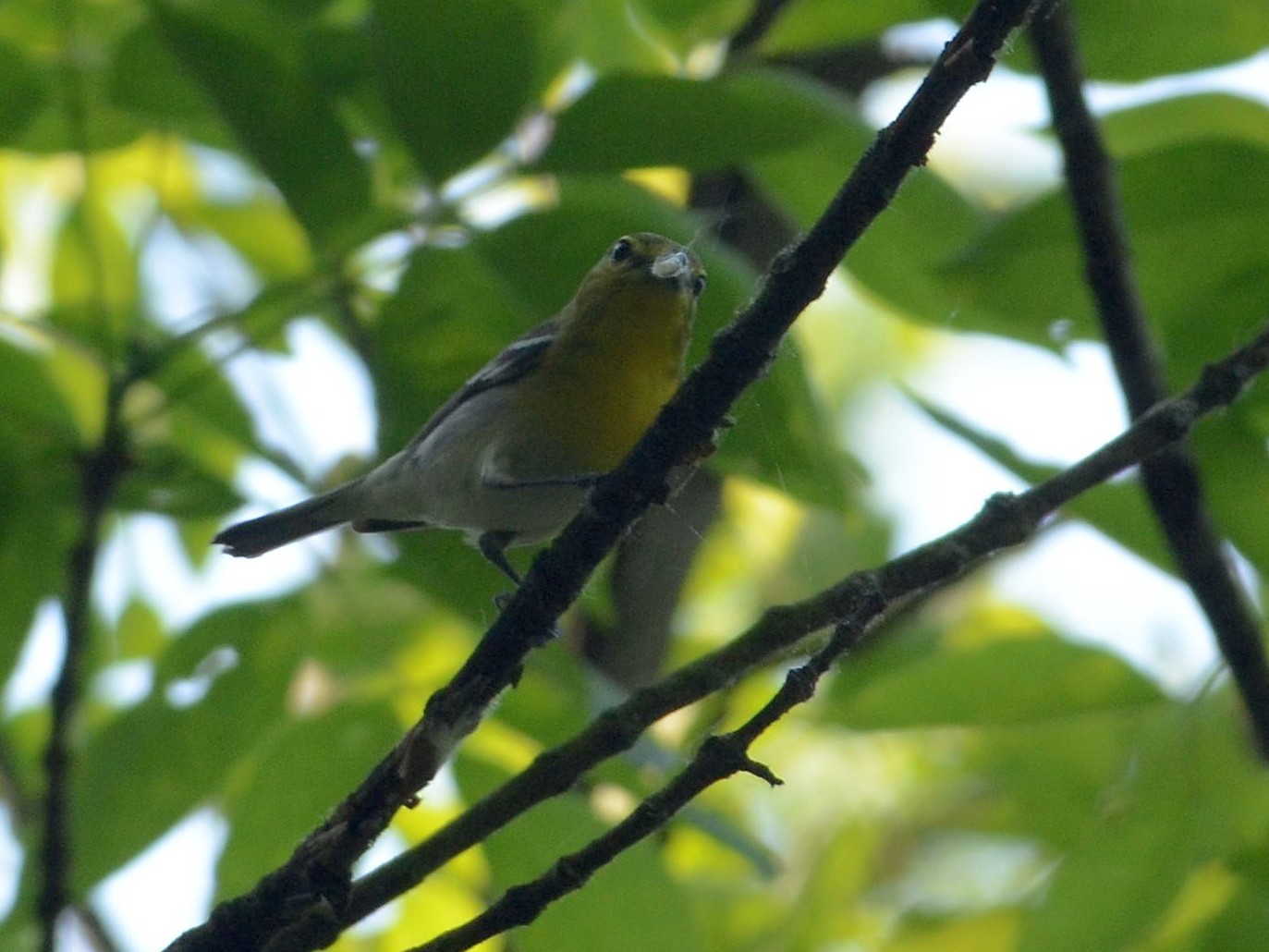Yellow-throated Vireo
A species of Vireos Scientific name : Vireo flavifrons Genus : Vireos
Yellow-throated Vireo, A species of Vireos
Botanical name: Vireo flavifrons
Genus: Vireos
Content
Description General Info
Description
Adults are mainly olive on the head and upperparts with a yellow throat and white belly; they have dark eyes with yellow "spectacles". The tail and wings are dark with white wing bars. They have thick blue-grey legs and a stout bill. Measurements: Length: 5.1-5.9 in (13-15 cm) Weight: 0.5-0.7 oz (15-21 g) Wingspan: 9.1 in (23 cm) 
Size
13-15 cm (5-6 in)
Life Expectancy
6 years
Nest Placement
Tree
Clutch Size
3 - 5 eggs
Incubation Period
1 brood
Number of Broods
13 days
Nestling Period
13 days
Feeding Habits
Yellow-throated Vireo predominantly consumes insects like butterflies, moths, stinkbugs, beetles, flies, and bees, as well as spiders. Occasionally, yellow-throated Vireo will also eat fruits and seeds. Their foraging occurs in a deliberate manner within mid to upper forest strata, hopping amid branches and gleaning prey from foliage and twigs.
Habitat
Yellow-throated Vireo predominantly inhabit deciduous or mixed woodlands, often favoring forest edges, gaps, and regions with expansive forest coverage. These birds show a preference for areas with over 250 acres of contiguous forest and generally avoid pure coniferous stands. During migration, yellow-throated Vireo can be found in various woodland types, edges, and shrubby coastal areas, adapting to a range of environments from dry tropical forests to rainforests, and coffee plantations up to altitudes of 6,000 feet.
Nest Behavior
For yellow-throated Vireo, males initiate nest building and gradually cede duties to females. Nesting includes selecting sites, followed by egg laying, with both parents involved in caring for young.
Nest Characteristics
Yellow-throated Vireo's nest is a cup shape, suspended from a fork in small tree branches, typically situated 20-50 feet high, near forest edges. It's constructed with bark strips, dry grasses, rootlets, pine needles, leaves, hair, bound by insect silk and spiderwebs.
Dite type
Insectivorous
General Info
Feeding Habits
Bird food type
Bird Feeder Type

Small Tube Feeder

Platform
Sounds
Song
Recording location: United States
Behavior
Yellow-throated Vireo exhibit a methodical approach to foraging, typically within the canopy's inner regions, often on stout, leafless branches. These birds are known for their insectivorous habits, preferring less vegetated areas for food searches compared to their vireo relatives. The commencement of breeding sees males preceding females in territory establishment, marked by partial nest constructions at multiple potential sites. Upon the females' arrival, males engage in a distinctive courtship display characterized by swaying and feather fluffing while vocalizing. Close companionship between the pair ceases post-fledging of the young. Outside the breeding season, yellow-throated Vireo might mingle with other bird species, such as warblers and chickadees, and occasionally participate in mixed-species flocks during migration and overwintering.
Distribution Area
Their breeding habitat is open deciduous woods in southern Canada and the eastern United States. These birds migrate to the deep southern United States, Mexico, the Caribbean, and Central America. They are very rare vagrants to western Europe; there is a September 1990 record from Kenidjack Valley in Cornwall, Great Britain, and September 1998 record from Heligoland, a small German archipelago in the German Bight. 
Species Status
Not globally threatened.
Scientific Classification
Phylum
Chordates Class
Birds Order
Perching birds Family
Vireos Genus
Vireos Species
Yellow-throated Vireo 